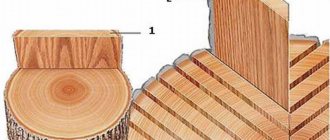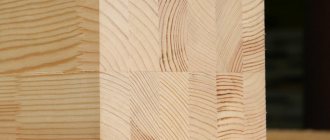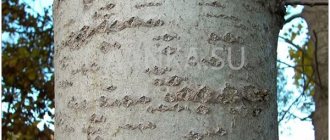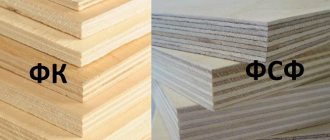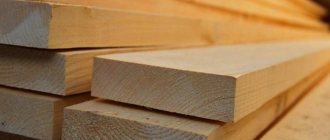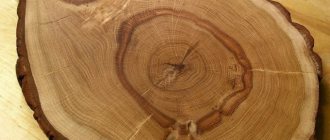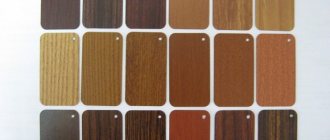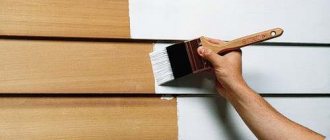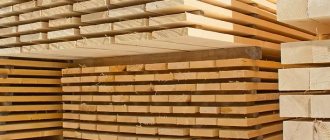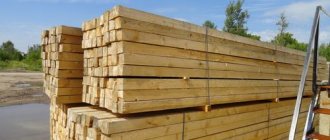In the woodworking industry, there are carefully drawn up instructions according to which types of lumber are sorted. The complexity of this system is that the gradation is carried out according to:
- Type of wood;
- Method of processing;
- Dimensions and geometric parameters of finished products.
That is, for complete identification of lumber, it is required to link it to all three criteria. And lumber itself is a product of the woodworking industry that meets certain parameters and contains at least two flat parallel surfaces.
What it is?
Among the varieties of lumber, timber can be called the most popular option used in construction to create load-bearing structures. Its production is standardized by the requirements of GOST 18288-87, GOST 22454-80, GOST 2695-83. This category includes lumber with width and thickness of at least 100 mm. The timber is made on sawmills by cutting 2, 3 or 4 edges from solid wood and dissolving to specified dimensions. The standard cross-section is rectangular or square, providing maximum strength and resistance to various types of loads.
The distinctive features of timber include its wide application - it is used as supporting elements, as well as as an independent building material. Careful surface treatment allows subsequent operations to be kept to a minimum.
Timber has obvious advantages that set it apart from other materials.
- Affordable price. The most budget-friendly solution would be the classic type of timber, which has natural humidity. Other options will cost more.
- Ease of installation. The treated lumber fits well in horizontal and vertical planes. Buildings from it are assembled and constructed in a few weeks.
- Unified dimensional parameters. The profile and length are standardized, which greatly facilitates calculations during construction.
- The production of timber is widespread, it is easy to find and purchase in any region.
- Low load on the foundation. You can build a lightweight foundation and build on heaving soils.
- Attractive appearance. High-quality profiled or laminated timber does not require additional finishing.
There are also disadvantages. Inexpensive varieties of naturally dried timber produce significant shrinkage, which is completely completed only after 1-2 years. Non-glued material cracks over time. Its flammability is also quite high; the surface requires additional protection with impregnations.
Scope of application
The scope of use of lumber is limited to two areas:
- Industrial and construction direction;
- Furniture and finishing direction.
But these two categories include almost all types of human activity. At the same time, in the production of furniture and decorative finishing, much deeper processing of lumber is carried out.
In addition to planing and grinding, the following can be used:
- Thread;
- Etching;
- Edged boards;
- Coloring;
- Varnishing, etc.
Separately, I would like to mention the work on imparting plasticity to lumber. This is necessary for the formation of products of unusual shapes.
With the right selection of lumber, you can make even such fantastic designs
These technologies are very labor-intensive and require good technological equipment. In principle, this is reminiscent of warming up in a huge microwave oven operating in a special mode.
What is attractive about this technology is the ability to re-process lumber using this method - if you don’t like the shape, you can change it.
What is lumber?
Depending on the degree of processing, lumber is:
- unedged (although there are no knots, there are untreated sections of logs);
- edged (the profile of the materials has a rectangular shape due to sawing off the defective side parts of the log);
- planed (no roughness on one or more edges).
Classification
The shape, size and mechanical characteristics determine the division of lumber into several types.
A timber is a log, hewn on all sides, used in the construction of houses, as well as for the manufacture of individual large elements of windows, stairs and others. The thickness of the timber is 100 mm.
The bars are “timber in miniature”, less than 100 mm thick, and can be untreated, planed (at least one side is processed) and calibrated (adjusted to a certain size). Scope of application: furniture production, lathing, flooring, frames, gazebos and other objects.
Boards are made from logs or beams. They come in unedged, edged (having a smooth edge) and edged only on one side. In addition, the boards can be calibrated, that is, they have specified dimensions.
Sleepers are a material with increased strength and minimal sensitivity to temperature fluctuations.
Croakers are boards obtained by sawing logs that have a smooth and semicircular surface.
Obapol is lumber produced from the side of a log, having only one flat side.
Advantages and disadvantages
Man has always been surrounded by objects and wood products. This material was used for the construction of houses and churches, baths and all kinds of outbuildings. The man was surrounded by wooden windows, doors, tables, chairs and other furniture.
Wood has not lost its popularity even today. On the contrary, thanks to the positive qualities of wood, construction and finishing materials made from wood are becoming even more in demand.
Advantages of lumber:
- have a high load-bearing capacity with a relatively low weight;
- despite its sufficient strength, the material is distinguished by its simplicity and ease of processing (it is malleable for drilling, easy to saw, and allows the production of figures of various shapes and complexity);
- ease and speed of installation;
- due to its natural origin and environmental friendliness, the material is considered completely safe for human health and the environment and does not cause allergies;
- processing does not require expensive and time-consuming work;
- external attractiveness;
- the pleasant smell of wood creates a favorable indoor microclimate;
- variety of shapes and sizes of products;
- affordable price.
Minuses:
- ability to quickly ignite, maintain combustion;
- are destroyed under the influence of fungus, mold, and various insects;
- Long-term exposure to water and a humid environment often causes wood to rot.
To protect lumber, make it more wear-resistant and durable, they are treated with special protective substances that can significantly reduce the above-mentioned disadvantages.
Classification by size and shape
In this gradation the sequence is quite simple:
| Thickness (L) | Width | |
| timber | More than 100 mm | More than 100 mm |
| Bar | Less than 100 mm | Less than or equal to 2L |
| Board | Less than 100 mm | More than 2L |
But when sawing logs, by-products are also formed, such as croaker and obapol.
Although they are similar, there is a difference between them. If the slope of the log was higher than normal, then both floors are removed during the first cut. This is a woodworking product that has only one face.
Sawing diagram
The next cut, if the croaker. For this product, one of the faces will only be partially processed.
Further cuts are made, depending on the thickness and width, of the following types of lumber: beams, timber or boards. Depending on the depth of processing, they can be edged or unedged.
There is another type of lumber that is included in this classification, but stands apart: sleepers.
The scope of their intended use is very limited, and their dimensions and strength characteristics are regulated by internal documents of Russian Railways.
Other building materials made of wood, such as slats, strips, glazing beads, etc., are made from lumber.
Wood type
There are two types of industrial wood:
- Deciduous;
- Coniferous.
Deciduous trees are generally considered to be hard, and coniferous trees are soft. But in fact, linden, aspen or alder, although deciduous trees, have soft wood. But larch, yew or cedar, on the contrary, are extremely hard.
To a greater extent, they differ in the presence of resinous substances in the wood mass. It is for this reason that coniferous wood boards are not used in rooms where a microclimate is created that is favorable for the release of resin to the surface.
The steam room and showers are not finished with coniferous wood just because of this.
But here there is an exception - yew. Although yew boards are not so often presented on the building materials markets, its wood is not considered valuable.
Special category
There is one more category of wood that should be mentioned, but it is not worth paying attention to. These are valuable or exotic wood species
It is impossible to find products made from it in common use. Sometimes it is used as inlay, or veneer is made from it to decorate pieces of furniture.
Such wood almost always has a unique combination of different properties that make it original and truly valuable.
Tree cutting
For example, the wood of the rose tree, which grows only in Brazil and Paraguay, exudes the aroma of roses for several decades. In addition, it has a beautiful textured pattern and yellow-pink color. But the price for a 6-meter board, 3 cm thick and 9 cm wide, exceeds $2,000.
Pattern and texture
These parameters manifest the ontological qualities of wood. The ability of fibers to intertwine or follow strict parallel courses, to be twisted or cross-layered, is present to one degree or another in every tree species. But they are combined in an extremely narrow-profile combination, which helps to accurately determine the type of wood.
Moreover, the texture of wood is particularly influenced by the place where the tree grows and the concentration of certain elements in the soil. In particular, the presence of iron-containing minerals in the soil increases the cross-layering of some tree species.
Greater importance is attached to the pattern and texture of wood if these types of lumber are intended for finishing work.
But in this case, some defects in wood, which disqualify it from the category of structural materials, increase the value of the product from such a piece. For example, curling sharply reduces the strength characteristics of lumber, but with skillful processing and sawing, it is possible to produce finishing boards with an exclusive pattern. Birch and Norway elm are valued for this property.
The color palette also characterizes the type of wood, but in some cases it may change during processing or use. Moreover, these changes may indicate the beginning of destruction, for example, rotting. But changes in the shade of wood can be caused by changes in the physical and chemical parameters of lignin and oily or resin fractions, which sometimes, on the contrary, increases the performance characteristics of the product. For example, larch heartwood has a resin with a unique qualitative composition. Upon contact with water, this resin polymerizes, and the material from the sound larch can no longer be damaged or processed. It is easier to file.
Strength characteristics
These parameters also have a lot of gradations that are rarely known to the average consumer. For example, strength is measured using the following criteria:
- For compression;
- For bending:
- Static;
- Dynamic;
- Tangential;
- Longitudinal.
- Tensile;
- For break:
- Along the fibers;
- Across the grain;
- For twisting;
- Chip;
Plus, the hardness of the wood is also measured.
In everyday practice, boards made of oak, hornbeam, larch, and beech are considered durable lumber. But they, with the exception of larch, are almost always used in interior decoration or carpentry.
As a construction material, lumber from coniferous trees is almost always used.
Soft wood is found in linden, poplar and aspen. It weakly resists the damaging effects of atmospheric factors when outdoors, which is why these types of lumber are used in interior decoration and artistic creation.
Types of timber
The trunks of deciduous or coniferous trees, with branches and knots removed and sawn across, are round lumber. The bark on them can be removed. The thickness varies. Also, their purpose may be different. There are 4 groups of round timber.
- Materials for peeling and planing.
- Materials for sawing.
- Materials for processing and producing wood pulp and cellulose.
- Materials for use without sawing, i.e. in round form.
The production of round timber is carried out with the aim of obtaining lumber. Softwood roundwood is primarily a raw material for lumber production.
Sawing methods
The first step in creating lumber is cutting the timber. Its technology determines the appearance and strength of the finished product. The cutting of materials can be longitudinal or transverse. For this purpose, various types of woodworking machines are used: circular machines with circular saws and band machines with flexible saws.
There are so many options for circular cutting.
- The radial line of the cut in cross-section approaches the core of the trunk, like the radius of a circle. The result is a product with smooth, parallel fibers. Such materials have a more attractive appearance due to their uniform texture and minimal distance between the fibers. Used to create expensive decorative boards. Advantages: high degree of strength, no shrinkage of the material.
- Tangential In this method, the cutting line runs at some distance from the core of the trunk, which in cross-section looks like a chord of a circle. Such products have an interesting figured texture with wide dark-light lines of fibers. The main disadvantage is the low degree of fiber strength and severe shrinkage of wood over time.
- Semi-radial or rustic is a cutting method that combines the features of the previous two. Uneven gaps of wood fibers are visible on the surface, which gives the product a unique appearance. The method is inferior in quality to radial cutting, but better than tangential cutting.
- Transverse is a method of cutting against the grain of wood. It is rarely used, mainly to create artistic parquet or kitchen cutting boards, since in this case the products have poor performance.
- Mixed combines the features of other methods. It is the most cost-effective and allows you to obtain a larger number of blanks from one log.
Elements
The following elements are distinguished in lumber:
- The plane is the longitudinal wide side and any side of the square section. The best surface contains the least amount of defects, which demonstrates the best quality of processing. The plane directed towards the core is called internal, and towards the sapwood - external.
- The edge is the longitudinal narrow side.
- Edge - the line of intersection of 2 adjacent sides.
- End - end transverse side.
- An optional element is the wane - part of the side surface of the log remaining on the lumber after sawing it. The distance between parallel faces is the thickness of the lumber, between the side edges is the width, and between the ends is the length.
More information about varieties, assortments and assortments of wood
In reality, of course, when choosing lumber in a warehouse, no one recalculates the number of knots or checks for cracks and other defects; in this matter, you will have to rely entirely on standard control. Also, when choosing, you need to clearly understand the range and type of lumber.
How to choose the right variety
An untrained person may be confused by the fact that instead of numbers, letters can be used to indicate quality, for example, wood grades A B C, just as in the case of a digital designation, they mean the division of wood depending on the number of defects.
For example, consider lining of different classes:
- if larch was used for production, then the extra class indicates that there are no defects at all;
- grade A - the maximum you can count on is no more than 1-2 small ingrown knots per 1 board;
- B – on average 1-2 knots per meter of board length;
- C – the number of knots is not limited at all; for this quality, only the presence of fallen knots is considered unacceptable;
- economy class - the price of this option is minimal, in addition to any number of knots (including fallen ones), flaws in the processing of the board are also allowed.
The number of knots clearly shows the differences between different varieties.
In general, letter marking largely depends on both the manufacturer and the wood. For example, when using Angara pine, the division into grades will look slightly different: in addition to the almost ideal extra-class, you can distinguish grade A (no more than 2-3 knots on the board) and grade B (maximum 4-6 knots).
When choosing, you may encounter another way of designating wood types:
- extra or selected variety can be indicated either by the number “0” or by a simple horizontal line;
- the first is the number “1”; the designation can also be used with a single dot or a vertical line;
- the second – respectively the number “2” or 2 vertical stripes or dots;
- third - 3 stripes, 3 dots or the number “3”.
Marking scheme
So the selection instructions simply boil down to looking for markings on the tree.
The only thing you need to know is which variety is best suited for solving which problems:
- Grade 1 can be considered the standard of quality. It is these lumber that are recommended to be used for the most critical structural elements, for example, for making a frame. For the production of structural lumber, only hard grades of wood are used;
- 2 - used for less critical tasks, for example, for flooring, wall cladding;
- 3 – suitable for elements that do not experience severe loads;
- 4 – the maximum that such wood can be used for is making containers and other small items useful in the household.
Lumber with different types of defects
Assortment and assortment
These concepts are almost identical and are used to classify lumber. Wood assortment is the division of lumber into groups mainly depending on size. For example, a board can be made from different types of wood, with different treatments, but in terms of assortment it will remain a board, but the quality can vary greatly (see also the article “How to make a stool from wood with your own hands: the material used and tools. Preparation and manufacturing process").
The classification of lumber was given above; it can only be noted that within the same type, the wood assortment provides for the existence of several standard sizes. The grade of the product may also differ depending on the processing method, storage conditions, etc.
In the GOST 24454-80 standard you can find out the dimensions of some types of lumber (in particular boards and beams). It can be noted that their length should be in the range of 1-6.5 m in increments of 0.25 m.
Lumber range
As for the section sizes, for example, the range of wooden beams provides for sections from 60x75 to 250x250 mm. But the minimum thickness of the board is 16 mm with a maximum width of 275 mm.
Regulatory Requirements
In relation to lumber, the requirements are quite stringent, and they relate not only to size, but also to the level of humidity, number and types of defects. GOST for lumber contains similar information.
As for the regulatory framework, we can highlight such documents as GOST 2695-83, GOST 26002-83, GOST 8486-86, GOST 9302-83, GOST 8486-86, GOST 24454-80, among the more modern ones we can note GOST R 1.0 - 2007. In order not to retell the contents of each of the standards, we will limit ourselves to only the main information.
The types of coniferous wood, or rather the requirements for them, are specified in GOST 8486-86. The following features of dividing wood into classes can be identified:
- It is recommended that manufacturers divide bars and boards into 5 grades (classes or groups may be mentioned). The bars are divided only into 4 classes;
- roughness (that is, the maximum amount of irregularities on the surface of the wood) should not exceed 1250 microns for grades no lower than 3, but for grade 4 the tolerance is increased and is already 1600 microns;
- As for humidity, up to the 3rd inclusive it should not exceed 22%. For the 4th, this indicator is not standardized at all;
In production, as a rule, wood is dried
Note! It is possible to produce not only dry lumber, but also wet antiseptic lumber. Such options are possible only by agreement with the customer.
Wood varieties 1 2 3 4 differ not only in the listed characteristics; special emphasis is placed on the number and type of defects. In GOST this classification is given in tabular form.
Here are some excerpts from the standard:
- for example, a defect such as knots is classified into healthy, partially fused and rotten. For selected wood class, the number of knots is limited to 1 (edge knot) and 2 (face knots);
Note! For beams, the number of knots is not regulated.
- For selected wood, even such an indicator as the inclination of the fibers is standardized. If this indicator exceeds 5%, then the grade is not selected, but 1st;
- defects such as sprouting, rot, and discoloration due to infection by various fungi are also not allowed for selected wood.
Photos of some types of defects
Based on the norms given in the standard for the compliance of wood with a certain grade, it is possible to fairly accurately determine the type of wood.
More information about timber grades and assortments
Wood used for the production of various building materials is classified by grade. This parameter depends on the characteristics of the wood and the quality of its processing. According to GOST 2140-81, lumber is divided into four grades based on wood quality. Classification of wood by grade involves a numerical designation from 1 to 4. Depending on the varieties and number of defects, various products are assigned a specific grade.
A grade 1 board or timber must have clean surfaces with a minimum number of flaws. In material assigned grade 2, a small number of defects are allowed that do not spoil its appearance. Third-rate products may contain any type of defect.
According to the European standard DIN 68126, lumber grades are designated by the letters A and B. On products with the A mark, wormholes, rot, wane, and the presence of knots of any size are not allowed. Grade B allows the presence of all types of defects on the wood in small quantities, with the exception of rot.
Russian entrepreneurs engaged in the production of lumber often determine the grade of their products according to unwritten standards that differ from generally accepted GOST standards. For example, you can find building materials of the following types:
- Extra. These materials must meet requirements that are much stricter than those for GOST 1st grade products. In principle, they should not have any defects. This material is very rare, so it is quite expensive.
- Prima. It is similar to DIN grade 1.
- Variety AB. These materials have characteristics that are variety-determining for extra and prima.
- Grade C. These wood products may contain any type of defect that does not violate their integrity.
What it is?
Lumber is a wood product obtained by sawing timber and having at least two parallel planes. The forestry and woodworking industries are involved in the harvesting of wood, processing and manufacturing of various products from it. The first industry is responsible for growing forests, that is, reforestation, and preparing timber. These tasks are performed by logging enterprises - forestry enterprises, forest rangers and sawmills. They cut down trees and harvest lumber, typical examples of which are logs and poles.
The next link in the process is wood processing enterprises. Timber prepared for recycling arrives there. Logs are sawn on sawmills in accordance with state and international standards. This is how lumber is produced, which includes boards, beams, and beams. The process of their manufacture is lengthy and consists of many links.
Lumber differs from wood composites - laminated veneer lumber, fiberboard and chipboard, plywood, which are produced by the same enterprises. They have a multicomponent composition and are products of tertiary forest processing. Like any other human activity, the production of wood products has both positive and negative impacts on the population and the environment. Among the advantages of wood materials are their environmental friendliness, ease of installation, relatively high strength and good load-bearing capacity. High-quality lumber has an attractive appearance and affordable price, and has a pleasant woody aroma.
The main disadvantages of timber processing are the massive cutting down of trees, and along with them the destruction of animals for which the forest is their home. Deforestation is exacerbating the problem of global warming. People destroy forests, then grow new ones, but the latter die due to fires and drought. It is impossible to make good lumber from dead wood, so it goes into the firebox. This completes the circle.
Wood structural defects
There are 48 structural defects of wood. Below is a description of wood defects that significantly affect the quality of wood and are the most common:
- Fiber inclination. Mismatch in the direction of wood vessels and the orientation of the main longitudinal axis of the trunk. The angle of convergence (oblique) is determined by the helical arrangement of the fibers around the central axis. There are two types of inclination of wood fibers.
- Tangential tilt. It manifests itself in lumber as non-parallelism of the core rays, resin ducts, and other elements.
- Radial tilt. Appears on rounded surfaces of wooden products. Determined by the presence of non-parallel growth rings. It manifests itself in details, veneers made from timber with such defects as bevelling, curvature, and roughness. The reason may be poor-quality cutting of straight-grained wood.
- Kren. Disturbance in the layering of tissues in the area of knots is manifested in an imaginary increase in the thickness of growth rings facing downwards. Inherent in conifers. It is determined visually on log cuts, or on the surfaces of blanks and products. Characteristic are arcuate, annular areas and stripes of a darker shade. The defect is most pronounced in trees that grew obliquely or are twisted.
- Local roll. Or veiny. Arcs, stripes passing through annual rings.
- A complete roll. Spots of continuous darkening, covering more than 50 percent of the area, are located to the left or right of the center of the transverse cut.
- Traction wood. Significant “stretching” of the width of annual increments. Such changes are typical for deciduous trees. Can be identified on a saw cut by locally expanded arcs. In products made from species with clear annual rings (ash, oak), such a defect becomes visible in the radial sections; it can be determined by the presence of strands of conductive tissue.
- Curly wood. It manifests itself in the chaotic growth of its blood vessels. A similar disordered arrangement of fibers inside the wood is often characteristic of the thickened lower quarter of larch trunks.
- Fibrous curliness. Some ordering can be observed in the course of the fibers.
- Confused curliness. Wood fibers are arranged completely randomly.
- Curl. It is formed from arcuately curved growth rings. The appearance of such distortions is caused by knots and sprouts. Curls can be one-sided or through, it depends on whether it comes out on one side of the product or on two opposite sides.
- Eyes. An eye is a bud that has not developed into a shoot. There are scattered (more than 1 cm between them) and combined into groups (three or more, with intervals of less than 1 cm). If the eye is painted in a color close to the general tone of the material, then it is called light; if it is more saturated, it is called dark.
- Pocket. Lacunae filled with resin or gum are located between the rings of annual growth.
- Core. The central cord of the trunk is made of spongy tissue with a brown or light color. There can be two cores, then the defect is called “double core”. If the core is displaced from the central axis of the tree, then its transverse becomes oval.
- Dry-sidedness. A section of the trunk that has died for some reason. The dried area has growths along the edges, its surface is depressed relative to the general surface.
- Germination. A wound that has healed or healed. At the site of the wound, a radial cavity remains filled with the remains of dead tissue.
- Cancer. A depressed or, conversely, convex area. Cancer is bacterial or fungal in nature.
- Grinded. An area of conifer wood with vessels filled with resin. The pitch is usually darker than the surrounding tissue.
- False core. It is characterized by uneven coloring, darker than the main background, its border does not follow the growth rings. The hardness of the false core is the same as that of the rest of the wood.
- Spotting. Stains, spots, lines observed in the structure of wood that do not affect the hardness. Characteristic of deciduous timber.
Types of processing
Basically, the characteristics of the finished lumber depend on the wood used for sawing and the actual dissolving process.
The frame house is based on lumber of different sections and types
Currently the following technologies are used:
- Transverse - along the fibers. Boards made using this method are used for artistic parquet flooring.
- Rustic - at an acute angle to the fibers. This technique is aimed at meeting the need for wood for the manufacture of flooring.
- Radial - along the radius, moving towards the center. Such lumber is almost ideal - after all, it has an attractive appearance, resistance to deformation, a homogeneous structure, and no peeling occurs on it.
- Tangential - tangent. This technique is used for different areas; the peculiarity of lumber is a beautiful pattern on the surface in the form of arches and rings.
Receipt
The process of material procurement occurs in accordance with GOST. It is quite labor intensive. It all starts with the fact that it is necessary to determine from all the lumber exactly the one that meets the above requirements in terms of quality and characteristics. Those that are below third grade in terms of parameters cannot be used for the production of commercial lumber.
Industrial wood is obtained from the main part of the tree - the trunk. Wooden logs are cut lengthwise using special equipment and formed into assortments. Next, the material is also cleaned, trimmed, polished on special machines and, if necessary, coated with special paints and varnishes.
The process of processing a material is largely determined by its further use.
How much industrial wood will come out of a cubic meter of forest depends on many factors, mainly, of course, on the type of tree. Today, the following species are used to produce this type of lumber.
- Oak. This is the most expensive and valuable type of wood in the whole world. Furniture and structures for renovation are made exclusively from oak.
- Beech. An excellent material is obtained from its trunk, which is later used for the production of flooring.
Pine and spruce, as you know, are resinous trees that, even after being cut down, can secrete resin for many years. The scope of application of lumber made from them is quite narrow.
The leaders in industrial timber production today are the United States, which owns 18% of the total global lumber production, Russia – 11%, China – 9%, Brazil – 8%. Of course, only those countries that have enough forests on their territory harvest, process and supply such raw materials to the market.
Production
Of course, when considering the use of lumber, one cannot help but touch upon the issue of production of wood products. This product is manufactured at specialized enterprises using a variety of sawing and processing techniques. The process uses a variety of equipment for the production of lumber, about which you need to learn more.
Sawmill frames
This production method is increasingly being called outdated. And it’s not surprising, because to set up a line you need to create a multi-ton foundation and constantly sort the processing results. In addition, the resulting wood is rough, that is, it requires additional processing, which leads to increased costs.
Another significant point is the poor geometry of the board; it is from this type of production that the popularly called “helicopters” come out. Well, the last aspect is that ready-to-use wood can be produced in a volume of 55% of the original amount of raw materials.
Wooden deck looks great
But there are also positive aspects of such a processing mechanism, these are:
- Cutting stability.
- Easy to maintain.
- Low requirements for the qualifications of sawmill personnel.
Although the heterogeneous production technology is outdated, they are willing to put up with its shortcomings due to the low cost of the process, and therefore the price for the end consumer.
This method produces, to a greater extent, wood of medium quality and medium thickness; it is advisable to use such a machine if there is a lot of cheap material.
Tape technology
It is called young and expensive; moreover, the qualifications of the workers are of key importance. It is in demand in the production of high-quality boards and processing of large cross-section materials. The width of the cutting belt can reach 1 m or more. There are also types of machines for cutting narrow lumber.
In order to launch linear production, you will not need to invest in a solid foundation. This technology can produce up to 75% of the material ready for use, that is, the amount of waste is minimal. For band saws, hard rocks are not a problem. A huge advantage is the thickness of the cut, it is 2-3 mm.
A significant problem is the price of manufactured wood. It makes sense to use such production machines only for materials with large diameters - from 100 cm.
Logs prepared for construction
The most problematic area in technology is the cutting tape. In order for it to provide high-quality material with its work, it must be changed regularly. In case of breaks, which occurs due to unprofessional actions of personnel, its repair is expensive. Basically, all these disadvantages concern narrow machines.
Circular technology
It is used for high-quality sawing of manufactured materials. Important advantages are the quality and speed of work, while all technological requirements and rules are observed. So to cut a 6 m log, it will take a couple of tens of seconds. Such machines can operate at sub-zero temperatures. The sawmill operator’s qualifications also matter here, and there are not enough trained personnel.
The sawing capabilities of such machines include wood with a diameter of up to 60 cm. It is for this reason that it is most often used as the first stage of lumber processing in complex production.
Angle saws
This class of machines stands apart from all others. The “highlight” of this is the presence of 2-4 saws at once, they are installed at an angle to each other. The key feature is the ability to produce timber, boards and other lumber from large-diameter solid wood. At the same time, the yield of commercial wood is 70%. Among the disadvantages is the need to regularly sharpen saws using expensive equipment.
Assortment
Today you can find a large number of varieties of products on the lumber market.
Plates
These are parts of wood that are made by one longitudinal cut through the center into 2 equal halves. They have only 1 sawn side and are used for the production of the entire range of lumber.
Quarters
These are parts of wood that are obtained by two longitudinal cuts of logs through the center into 4 equal parts. They have 2 sawn, mutually perpendicular sides and are used for the production of some lumber, joinery and moldings.
timber
This is lumber whose cross-sectional dimensions along both axes are more than 100 mm. Made from hard wood. Used to create beams for supporting structures in the construction of bridges, ships, log houses and interfloor ceilings.
Bar
Lumber, the dimensions of which in cross-section along both axes are less than 100 mm, and the width is not more than twice the thickness. When creating them, the same standards are applied that are used in the production of boards.
Board
This is lumber, the width of which in cross-section exceeds the thickness by 2 times or more. It has wide sides called faces, and narrow sides called edges. Plates are always processed by planing and grinding. Edges can sometimes be tongue-and-groove by creating tongue-and-groove or tongue-and-groove joints.
There are several types of boards.
Lining is a long board of small width and thickness. Used for interior decorative finishing of a room, attached to the sheathing end-to-end or through grooves. Lining is the cheapest and most common type of decorative boards.
Destructive factors
It is impossible to use lumber without understanding what can destroy it. There are many such factors and everyone who works with wood should know this set. In general, the durability of a particular board or timber is influenced by the width of the annual layers and density. Each breed has individual characteristics. To determine the strength indicator, the following characteristics are used:
- Hardness is the ability to resist the penetration of objects with a higher density into a material.
- Density - it largely depends on the correctness of the drying process. So, when using the chamber method, any type of wood can either improve or deteriorate. For example, when drying in a chamber with a temperature of +100⁰, the strength decreases. Long-term exposure to air heated above +50⁰ leads to a deterioration in viscosity parameters. The chemical composition changes, fragility increases.
- Resonant frequency.
- A number of other parameters.
Strength tests are very important, because they provide the opportunity to obtain data regarding the possibility of safe use of wood for certain purposes.
Wood is the main material for finishing a bath
Additional destructive factors for this material are:
- Acids, alkalis. Concentrations of these substances within 10% can negatively affect the strength, especially of hardwood. In this case, the indicator decreases by 2 times. These substances have a negative effect on hardness and toughness.
- Gases. They are everywhere - these are emissions from manufacturing enterprises and transport. The worst effects on the quality of lumber are the following types of gases: fluorine, nitrogen oxide, mercury vapor, ammonia, phosphorus, etc.
